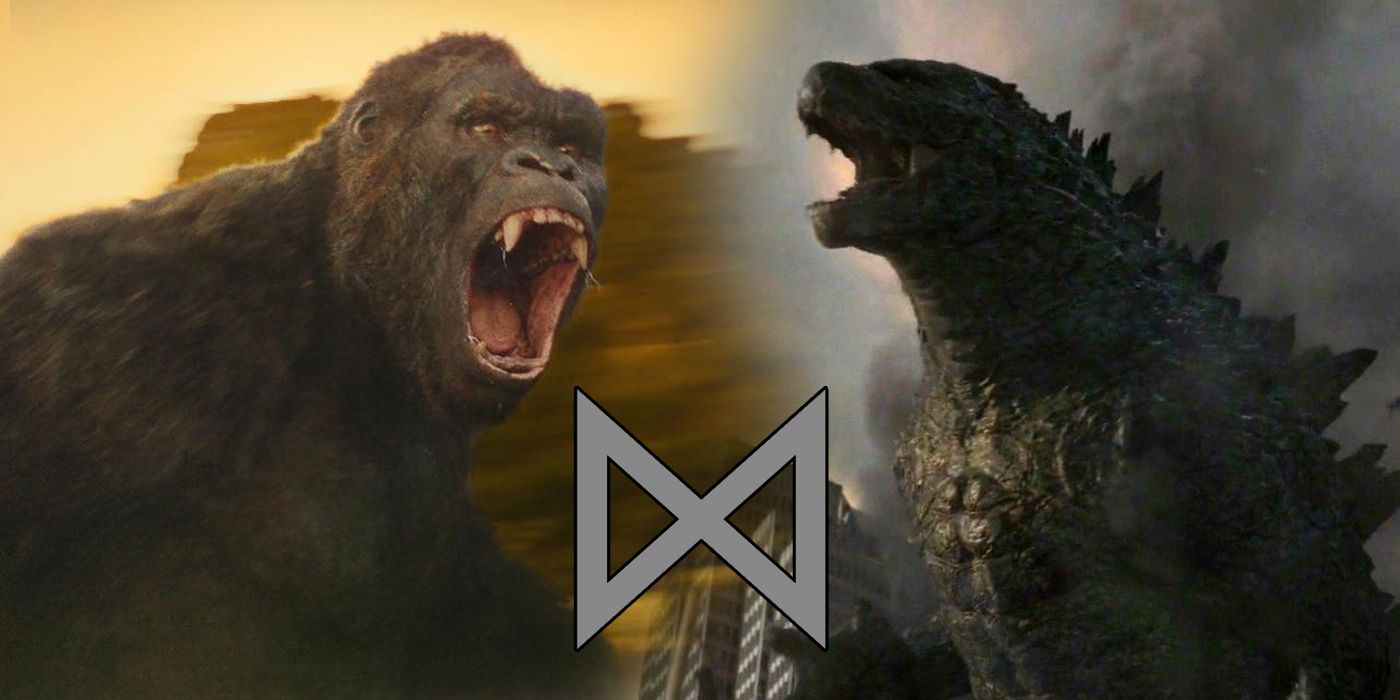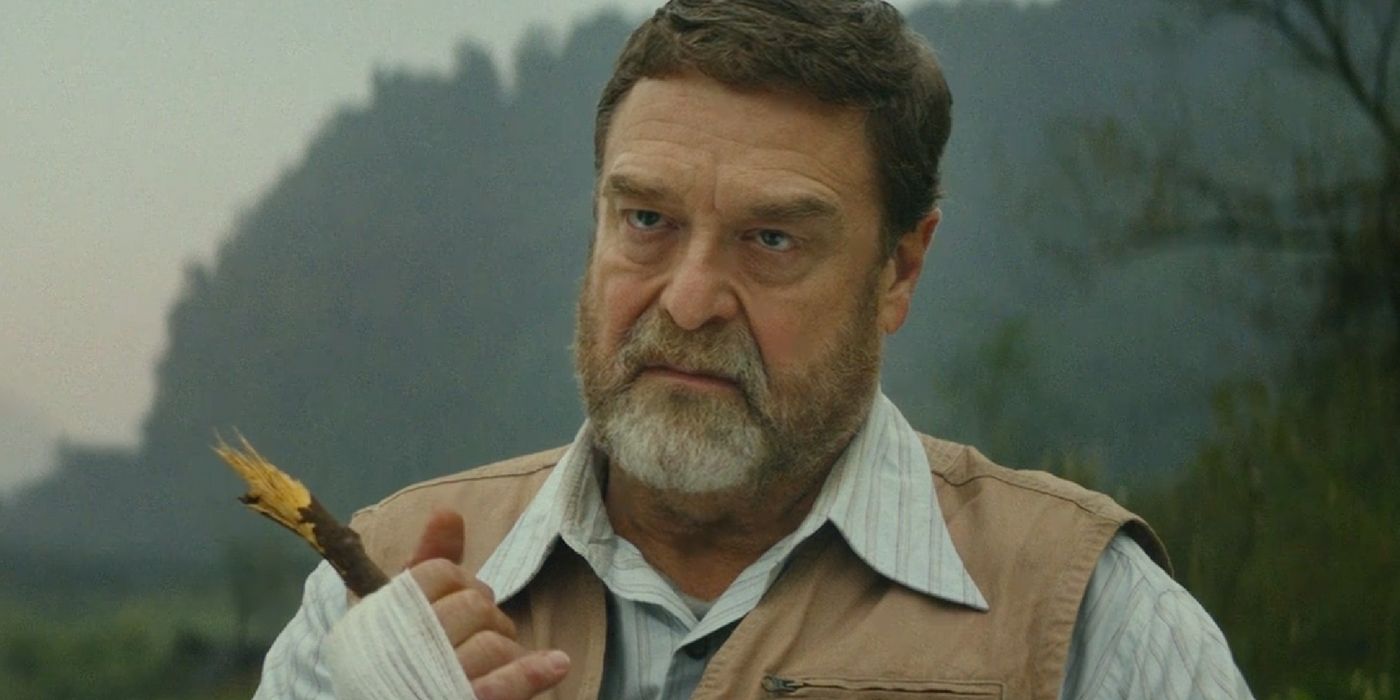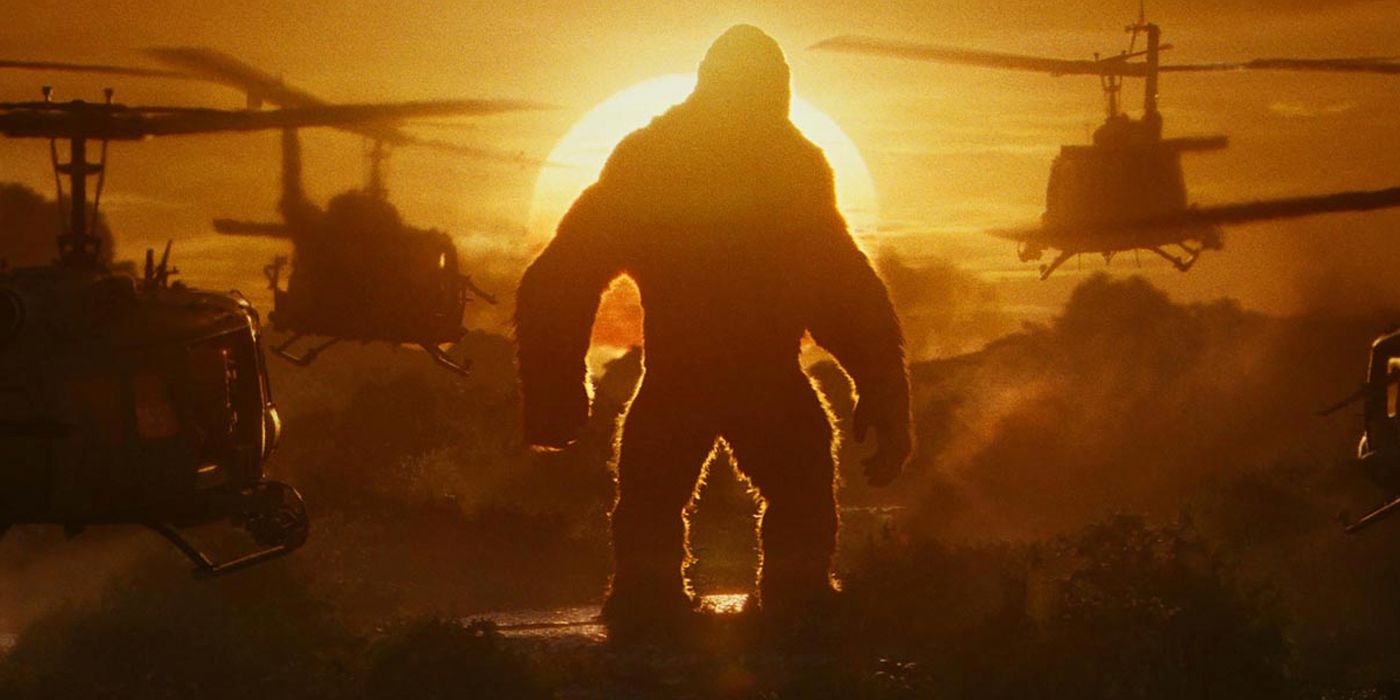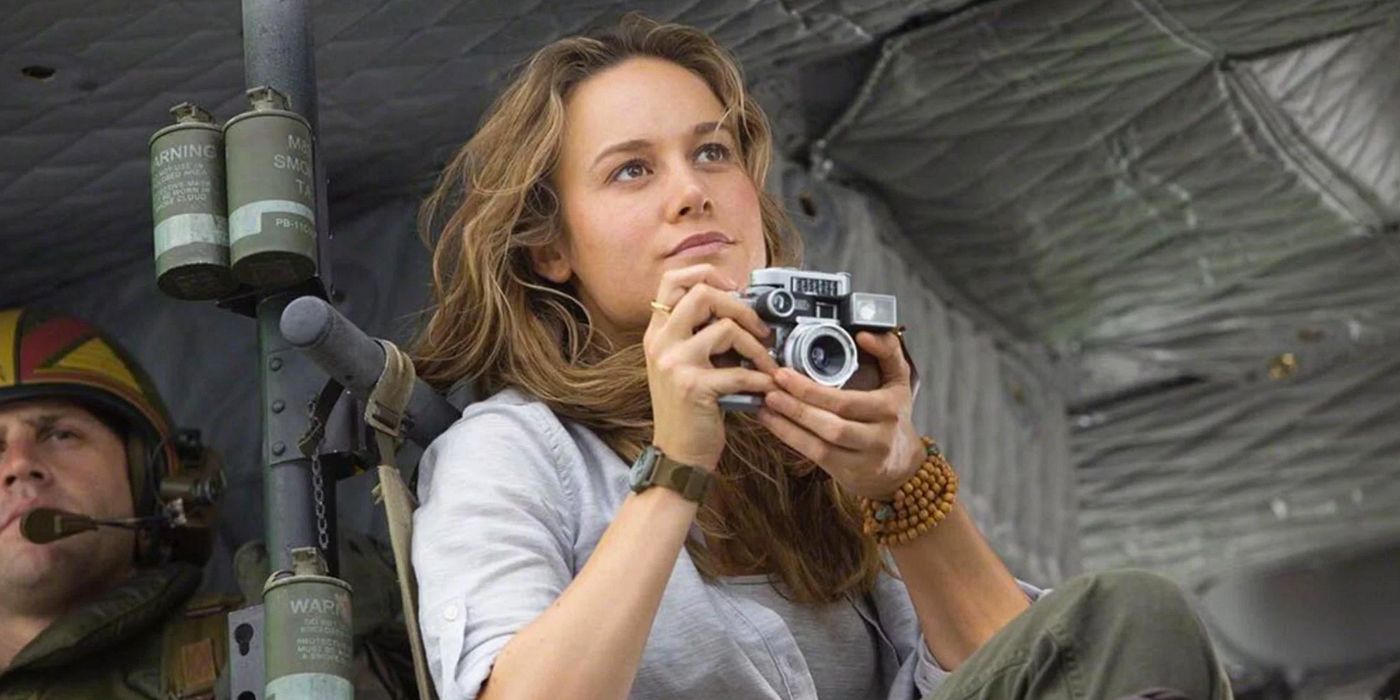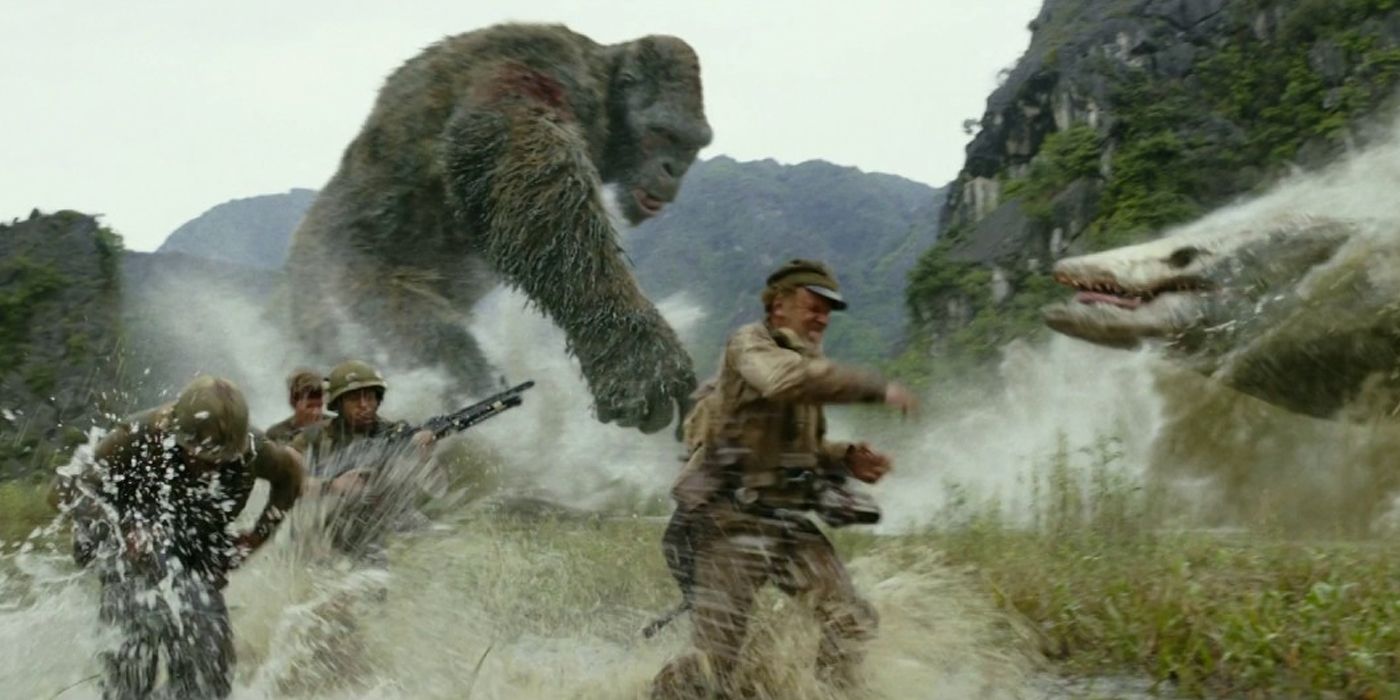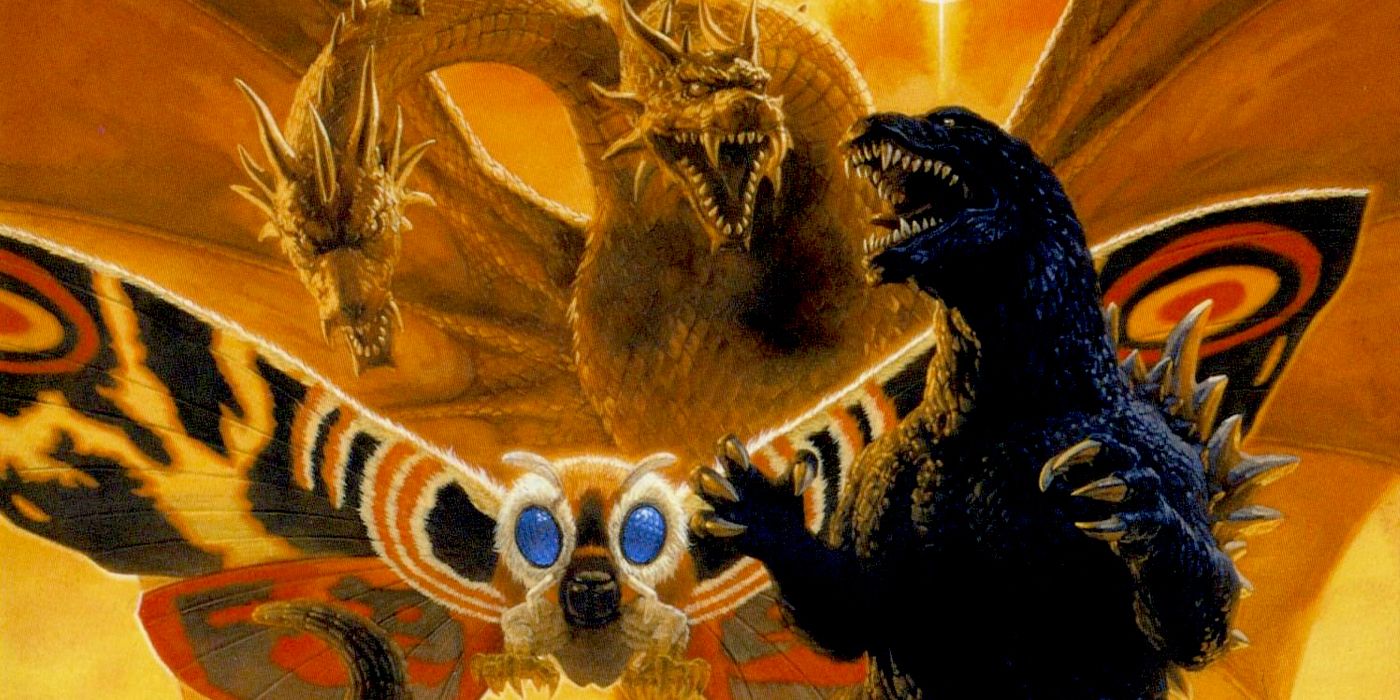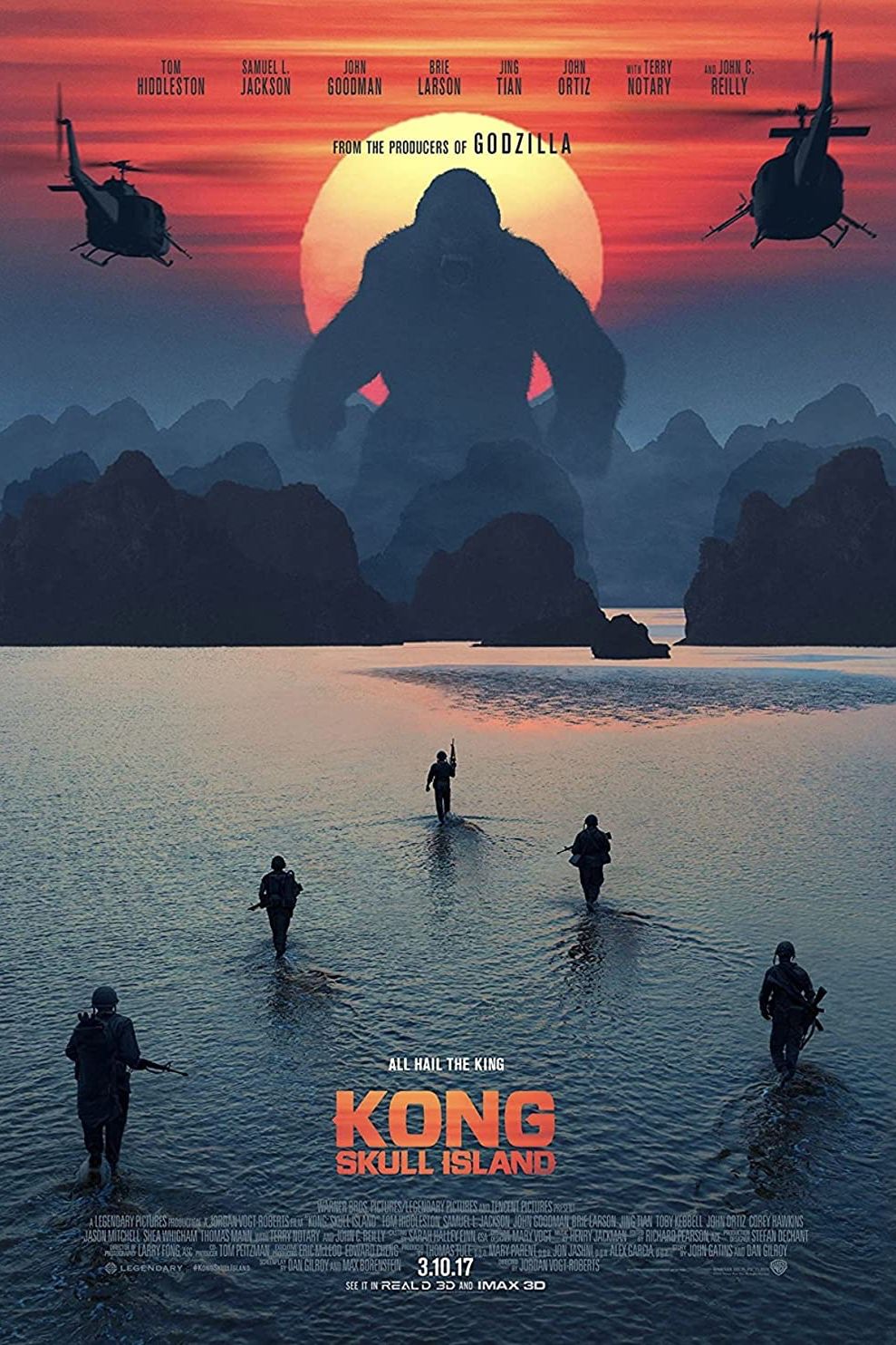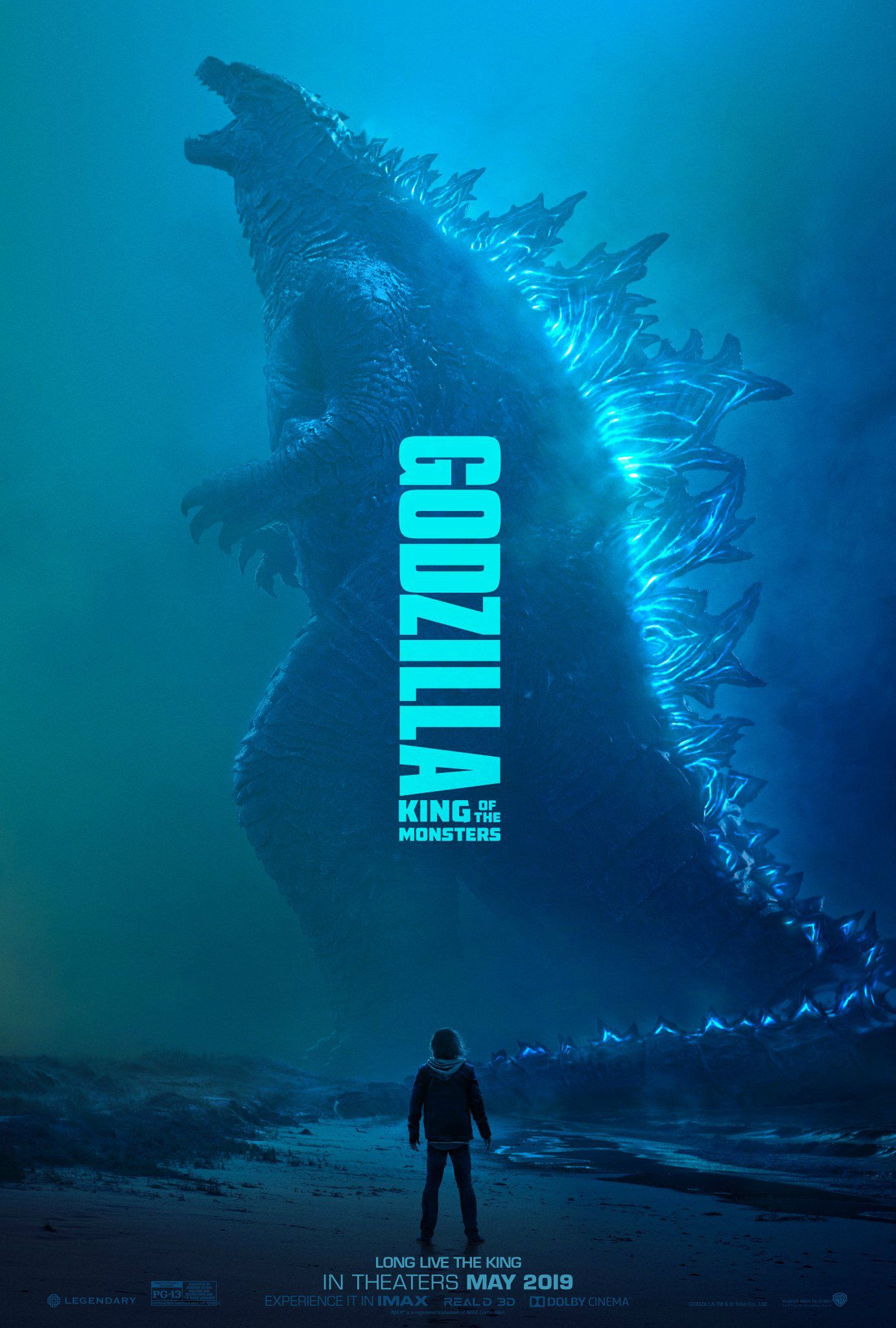Warning: Spoilers for Kong: Skull Island ahead
-
Counting all the remakes and sequels, Kong: Skull Island is the sixth American film based on the eighth wonder of the world - although it’s a little bit different from the earlier iterations. The 1933 original, the 1976 update and 2005 remake-cum-expansion all told a similar enough story – film director goes to mysterious island, finds big monkey, turns him into a Broadway show, monkey climbs tall building (The Empire State Building in 1933 and 2005, the North Tower of the World Trade Center in 1976) and is killed by beauty (and some planes).
Kong: Skull Island not only transplants the ape into 1971 (basically telling a Vietnam War epilogue) but also sets up a bigger shared universe and, in particular, a massive showdown. This film is the second part of Legendary’s MonsterVerse, which started in 2014 with Godzilla and is set to reach its height in 2020 with Godzilla vs. Kong. This isn't the first time the two biggest monsters in all cinema have met - they previously battled in a Japanese production, Kong vs. Godzilla, in 1962 - but this is the first time since the rise of the mega-franchise model popularized by the Marvel Cinematic Universe.
Director Jordan Vogt-Roberts has made clear that the film was made to function entirely on its own merits, and as a schlocky, stylish monster movie it certainly delivers on that. But, as trailers teased, it’s not devoid of links to the MonsterVerse. There are plenty of clues and easter eggs for where we’re heading, getting audiences ready for Godzilla vs. Kong. Here's a breakdown of everything you need to know.
Monarch
By far the biggest link between Kong and Godzilla, and one that will form the background of the MonsterVerse, is Monarch. Basically this shared universe’s version of Marvel’s S.H.I.E.L.D., they were introduced in Godzilla as a government organization that monitors terrestrial monsters, in that case inspecting and tracking Gojira and the M.U.T.O.s.
They’re represented in Kong: Skull Island by John Goodman’s Bill Randa and his assistant, Corey Hawkins' Houston Brooks. We see that in the early seventies Monarch was on its last legs, struggling to get approval from the US government for chasing “imaginary monsters,” but after LANDSAT reveals footage of an uncharted, hitherto inaccessible island they manage to get approval for an official expedition with cooperation from scientists and the US military. For much of the film, Randa is presented as scheming or otherwise duplicitous, but after Samuel L. Jackson’s Colonel Packard reveals himself as the real human monster, it becomes clear they’re simply driven to discover the truth.
Aside from instigating the mission, Monarch doesn’t have much of an explicit role in the plot, but what the movie does provide is significant backstory on their operation. We learn that the division was created in 1946 on the approval of President Harry S. Truman, with the belief that there are ancient species that really own the Earth, possibly living beneath the surface. Just as Kong’s military action is heavily informed by Vietnam, the Monarch side of the story appears to be a parallel to the Cold War; its formation is a reaction to World War II, and the fear of the Russians getting to Skull Island first is what motivates the mission.
The exact role Monarch will play in Godzilla: King of Monsters (the sequel due in 2019) and the Kong showdown is unclear, but it seems likely they’ll be monitoring the ensuing destruction and form an increasingly large part of the human side of the conflict (in the two movies so far the military have proven rather ineffective).
Kong Is Bigger (And Still Growing)
From the moment Skull Island was announced to be providing groundwork for a Godzilla vs. Kong film, it was understood a big change would need to be made to the giant monkey. Namely, he was going to have to be much, much bigger. The ape seen in the 1933 original was 24 feet tall, and the same was true of Peter Jackson’s remake. That’s certainly imposing to a human, but pretty insignificant next to Godzilla, who in the Legendary incarnation stands at 355 feet.
And so it was confirmed that the new Kong would be much bigger, according to Jordan Vogt-Roberts standing at 100 feet tall. This not only allows for Skull Island to offer some unique Kong action – bi-planes would prove no issue for this King – but ostensibly gives a in-built way for him to take on Godzilla. Although there is still a problem with this – the maths doesn’t add up. Even inflated 400%, this Kong is still a fraction of the size of Godzilla, meaning their fight is somewhat mismatched. Contrast this to the Japanese version, where Kong was 147 feet, much more in-line with the contemporary size of his nemesis.
Skull Island actually accounts for this, however; John C. Reilly’s Marlow makes a point of how Kong is still growing, meaning that there’s room for him to become more of a Kaiju-threatening size by 2020 (fifty years on from the events of the current film).
The Incriminating Photos
Brie Larson gets some blockbuster training ahead of Captain Marvel as Mason Weaver, an anti-war photojournalist just coming off a stint covering the end of the Vietnam. Throughout the film she’s armed with her trusty camera (even when a gun would probably have been more useful) and takes all manner of pictures – of the island on approach, of Kong during the helicopter attack, of the indigenous population – for when she returns to the mainland.
However, after repeated monster run-ins and learning Kong is more docile than he first appears, she vows to Tom Hiddleston's James Conrad to not release the pictures. Coming out of the movie, this feels rather odd. The photographs have been a strong recurring plot point, with an entire montage sequence centered on them, so for such an essential plot trait to be dropped doesn't quite fit. It would seem likely that these are being saved to be used in a later film; most probably, they'll surface as part of the versus movie, uncovered in the modern day to reveal the existence of Kong (who can now have fully grown), in turn leading to him being brought to civilisation (and Godzilla).
Confusing matters somewhat, in the post-credits scene, Mason seems keen to reveal the truth to the public, doubling-back on her previous stance. Although, as Monarch rather swiftly silence her and Conrad (which we’ll get to in a moment), that may not be too much of an issue.
The MonsterVerse Style
It isn’t plot-related, but one of the biggest signifiers Skull Island gives for the direction of the MonsterVerse is its style. Having a set of recognizable, underlying filmmaking elements is a great way to signify movies are linked even when the connection may not be immediately obvious; Marvel obviously own this with their rather intricate formula, but it’s also true of Star Wars’ designs and cinematography and the DCEU’s heightened reality. Done right, they don’t impede the individual directors, but together make a cohesive whole.
Indeed, Kong has some noticeable differences to Godzilla – it reveals the monster much earlier, visually has a lot more verve and the tone is more traditionally B-movie than Gareth Edwards’ serious take on the King of Monsters – but it still manages to underline several key traits.
We once again open with a montage of real-world footage presented by Monarch intended to show how the respective monsters are interlinked with human history. The scale balance of the action is the big similarity, though. Vogt-Roberts plays around a lot with his blockbuster toolkit, but when it gets down to the monster action he mostly leans on the facets of Edwards’ fights; a mixture of shots highlighting the scale of the action in comparison to the humans and those from the beasts' height contorting perspectives. This leads to both movies’ best moments, and will likely be the driving force behind the MonsterVerse going forward.
The Post-Credits Scene
For all these clues, for the most part Kong: Skull Island is a focused adventure whose first priority is to tell its own story. As such, the most explicit piece of setup for the wider MonsterVerse comes not in the movie itself, but the post-credits scene.
The scene opens with Weaver and Conrad being held in an interrogation room shouting at unseen watchers. Conrad makes clear he won’t talk to anybody – specifically the Russians – about what they saw on Skull Island (which is clearly being covered up), but Weaver makes clear she wants to bust the story wide open. Brooks and Jing Tian's San Lin (who was also on the island) enter, revealing that we’re in Monarch HQ. Brooks calms the imprisoned pair down, revealing he wants to recruit them; he states that “Kong isn’t the only King," leading to a slideshow of cave drawings that reveal not only Godzilla, but iconic Toho kaiju Mothra, Rodan, King Ghidorah (and one final shot of Gojira engaging with the latter). The scene ends with a fade to black as Godzilla’s roar plays out at full volume.
The scene isn’t directly linking to Kong vs. Godzilla, rather setting up sequel Godzilla: King of Monsters, and for audiences not tracking the Monarch connections gives explicit confirmation that we’re dealing with a very unique shared universe.
It was teased all the way back in 2014 that these classic Godzilla enemies would be making an appearance, but now they’re finally on screen (albeit in drawing form). Design-wise, Legendary looks to be taking an incredibly faithful approach, with each looking exactly like the giant moth, Pteranodon and three-headed dragon kaiju fans will know and love respectively. The clip also sets up that this showdown isn’t going to be too amicable – while the M.U.T.O.s were new foes for Godzilla, he’s got a long-standing rivalry with these giants.
It’s going to be one hell of a fight, and then there’s Kong to come after.

